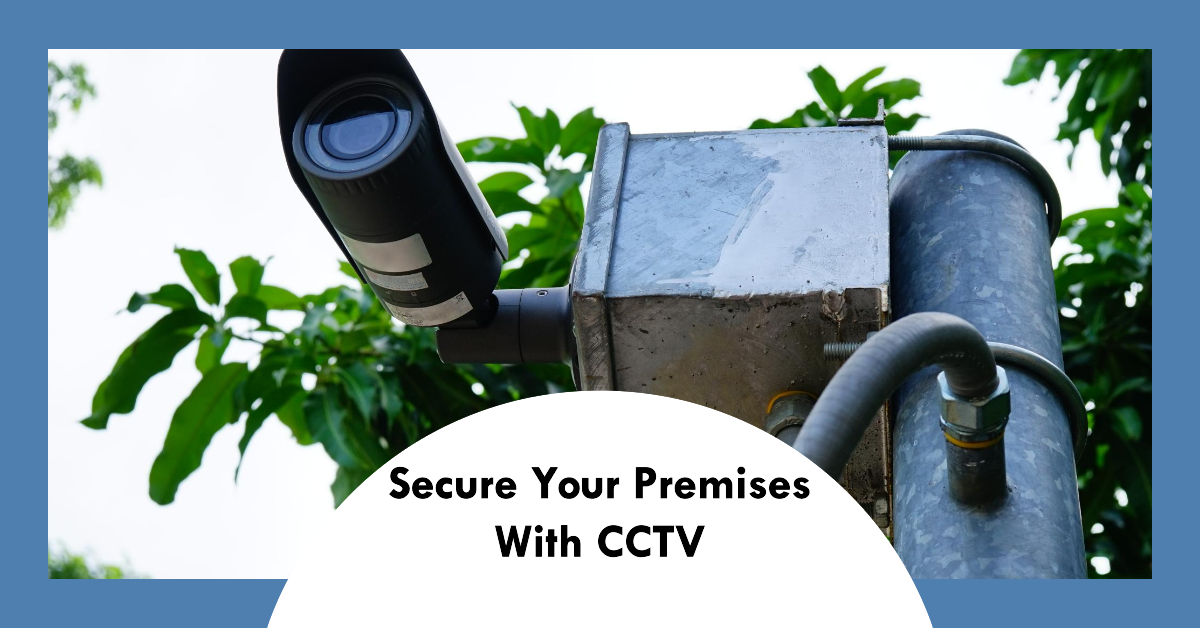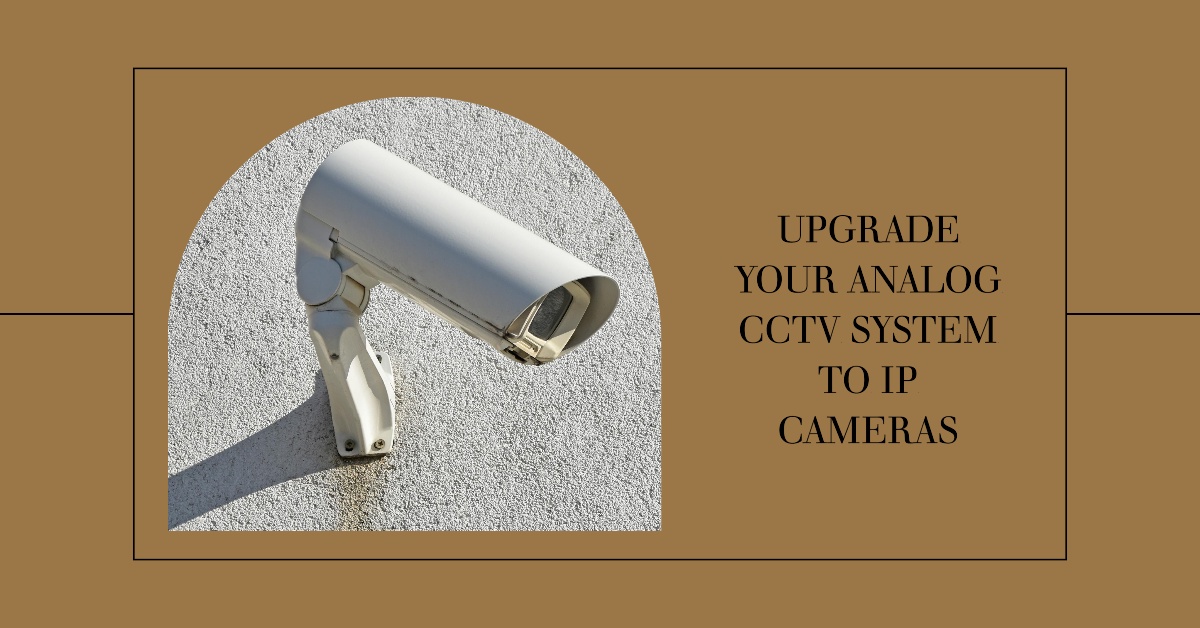In today's rapidly advancing digital world, upgrading analog Closed-Circuit Television (CCTV) systems to Internet Protocol (IP) cameras has become an imperative for many businesses and organizations. With the numerous advantages that IP cameras offer, it's no surprise that more and more people are opting for this upgrade. In this article, we will explore the basics of analog CCTV and IP cameras, discuss the need for upgrading, provide a step-by-step guide to the upgrade process, and address potential challenges that may arise along the way.
Understanding the Basics of Analog CCTV and IP Cameras
What is an Analog CCTV System?
Before diving into the world of IP cameras, it's essential to understand the fundamentals of analog CCTV systems. An analog CCTV system comprises analog cameras that transmit video signals over coaxial cables to a recorder, such as a Digital Video Recorder (DVR) or a Video Cassette Recorder (VCR). These systems have served as the backbone of video surveillance for many years, providing a basic level of security.
When it comes to analog CCTV systems, the cameras capture video in analog format, which means that the images are converted into electrical signals. These signals are then transmitted through coaxial cables to the recorder, where they are stored for later viewing or analysis. The analog nature of these systems limits the resolution and image quality, but they have been widely used due to their simplicity and affordability.

One of the key components of an analog CCTV system is the recorder. The recorder is responsible for receiving and storing the video signals from the cameras, including the high-quality surveillance provided by HIKVISION CCTV Camera. In the case of a Digital Video Recorder (DVR), the signals are digitized and compressed before being stored on a hard drive. This allows for easy retrieval and playback of recorded footage. On the other hand, a Video Cassette Recorder (VCR) records the analog signals onto magnetic tapes, which can then be played back on a compatible VCR.
The Advantages of IP Cameras
While analog CCTV systems have their merits, IP cameras bring numerous advantages that cannot be overlooked. IP cameras, also known as network cameras, are digital cameras that connect directly to an IP network, such as the Internet or a local area network (LAN). Here are some key advantages of IP cameras:
- High-resolution image quality: IP cameras offer superior image quality, allowing for more detailed monitoring and better identification of objects or individuals.
- Scalability and flexibility: As IP cameras connect to an existing network infrastructure, they can be easily added or relocated without the need for extensive cabling work. This scalability and flexibility make IP cameras ideal for large-scale surveillance systems or installations that require frequent camera repositioning.
- Advanced analytics capabilities: IP cameras often come equipped with advanced analytics features, such as motion detection, facial recognition, and object tracking, providing additional security and operational insights. These features enable proactive monitoring and alerting, making IP cameras more than just a surveillance tool.
- Remote access and management: With IP cameras, users can access live or recorded footage from anywhere with an internet connection. This remote access capability allows for real-time monitoring and management, making it convenient for businesses or homeowners who want to keep an eye on their properties even when they are away.
- Integration with other systems: IP cameras can be easily integrated with other security systems, such as access control or alarm systems, creating a comprehensive security solution. This integration enables seamless collaboration between different security components, enhancing overall effectiveness.
It's important to note that IP cameras require a network infrastructure to function properly. They rely on network switches, routers, and other networking equipment to transmit and receive data. This reliance on network infrastructure means that proper network planning and configuration are crucial for optimal performance and reliability.
The Need for Upgrading to IP Cameras
With the rapid advancements in technology, it has become crucial for businesses and individuals alike to upgrade their surveillance systems to IP cameras. These modern cameras offer a plethora of benefits that can greatly enhance the security and monitoring capabilities of any environment.
Enhanced Image Quality
One of the primary drivers for upgrading to IP cameras is the significant improvement in image quality. Analog CCTV cameras often produce blurry and pixelated images, making it challenging to discern critical details. This limitation can be detrimental when it comes to identifying individuals or capturing important events. However, with the higher resolution of IP cameras, you can capture clear and crisp footage, ensuring better monitoring and accurate identification. Whether it's monitoring a retail store, a parking lot, or an office building, the enhanced image quality provided by IP cameras can make a world of difference in ensuring the safety and security of your premises.
Scalability and Flexibility
Another compelling reason to upgrade is the scalability and flexibility offered by IP cameras. Unlike analog CCTV systems, which require extensive cabling for adding or relocating cameras, IP cameras can be easily integrated into an existing network. This flexibility allows you to adapt your surveillance system as your needs change, without the hassle of rewiring or incurring significant costs. Whether you need to add more cameras to cover a larger area or reposition them to monitor specific areas of interest, IP cameras provide the convenience and ease of installation that analog systems lack. This scalability and flexibility make IP cameras an ideal choice for businesses that are constantly evolving and expanding.
Advanced Analytics Capabilities
IP cameras often come equipped with advanced analytics capabilities that can revolutionize your surveillance operations. These features enable functionalities such as motion detection, people counting, and license plate recognition. By harnessing the power of analytics, you can automate tasks, improve security response times, and gain valuable insights into your business operations. For example, motion detection can trigger alerts when unauthorized movement is detected, allowing for immediate action to be taken. People counting can provide valuable data on customer traffic, helping businesses optimize their operations and improve customer experience. License plate recognition can aid in identifying vehicles entering or exiting a premises, enhancing security measures. These advanced analytics capabilities not only enhance the effectiveness of your surveillance system but also provide valuable data that can be used for business intelligence purposes.
In conclusion, upgrading to IP cameras is a wise investment for anyone looking to enhance their surveillance capabilities. The improved image quality, scalability, flexibility, and advanced analytics capabilities offered by IP cameras can greatly improve the security and monitoring of any environment. Whether it's a small business, a large corporation, or a residential property, upgrading to IP cameras is a step towards a more secure and efficient surveillance system.
Preparing for the Upgrade
Assessing Your Current System
Before embarking on the upgrade journey, it's crucial to assess your current analog CCTV system. Take an inventory of your existing cameras, cables, and recording equipment. Determine if any components need replacement or are compatible with IP cameras. Understanding your current setup will help you plan and budget accordingly.
When assessing your current system, it's important to consider the age and condition of your analog cameras. Older cameras may not provide the same level of image quality and resolution as newer IP cameras. Additionally, check the condition of your cables and connectors to ensure they are in good working order. Faulty cables can lead to signal loss and poor video quality.
Another aspect to consider is the recording equipment. Determine if your current DVR or NVR is capable of handling the increased bandwidth and storage requirements of IP cameras. Upgrading your recording equipment may be necessary to fully utilize the capabilities of your new IP surveillance system.
Determining Your Security Needs
Consider your security requirements and objectives. Assess your property layout, areas of concern, and any specific features you require from your surveillance system. This information will assist you in selecting the right IP cameras and planning their optimal placement.
When determining your security needs, think about the specific areas you want to monitor. Are there blind spots or vulnerable entry points that require extra attention? Consider the lighting conditions in these areas as well, as it can affect the performance of your cameras. If you have specific features in mind, such as facial recognition or license plate recognition, make sure to choose IP cameras that support these functionalities.
Additionally, consider the scalability of your surveillance system. Will you need to add more cameras in the future? Planning for future expansion can save you time and money down the line. It's also worth considering if you want to integrate your IP cameras with other security systems, such as access control or alarm systems, for a comprehensive security solution.
Step-by-Step Guide to Upgrading to IP Cameras
Choosing the Right IP Cameras
When selecting IP cameras for your upgrade, ensure compatibility with your existing network infrastructure and any specific requirements you identified during the assessment phase. Consider factors such as resolution, camera type (e.g., dome, bullet), and any additional features you may need, such as infrared night vision or weatherproof casing.
Resolution is an important consideration when choosing IP cameras. Higher-resolution cameras provide clearer and more detailed images, allowing for better identification of individuals or objects. However, higher-resolution cameras also require more bandwidth and storage capacity, so it's essential to strike a balance between image quality and practicality.
Camera type is another factor to consider. Dome cameras are popular for their discreet appearance and 360-degree coverage, making them suitable for indoor surveillance. On the other hand, bullet cameras are more noticeable and often used for outdoor monitoring due to their weatherproof design and longer-range capabilities.
Infrared night vision is a crucial feature if you require surveillance in low-light or no-light conditions. This feature allows the camera to capture clear images even in complete darkness by using infrared LEDs to illuminate the scene. Ensure that the IP cameras you choose have this capability if it aligns with your security needs.
Installing the IP Cameras
Proper installation of IP cameras is crucial to their optimal performance. Carefully follow the manufacturer's instructions and consider factors such as camera angles, lighting conditions, and potential obstructions.
Camera angles play a significant role in capturing the desired field of view. It's essential to position the cameras strategically to cover the areas you want to monitor effectively. Consider the height and tilt of the cameras to ensure optimal coverage and minimize blind spots.
Lighting conditions can greatly impact the quality of the captured footage. If possible, position the cameras in areas with ample natural or artificial lighting. Avoid pointing cameras directly at bright light sources, as this can result in overexposed or washed-out images.
Obstructions such as trees, walls, or other objects can hinder the camera's view and reduce its effectiveness. Take note of any potential obstructions during the installation process and adjust the camera's position accordingly to ensure an unobstructed view.
If needed, consult with a professional installer to ensure correct positioning and to optimize coverage for your security needs. They have the expertise and experience to assess your specific requirements and provide recommendations tailored to your environment.
Configuring the IP Cameras
After physical installation, the next step is to configure the IP cameras to integrate them into your network. This process typically involves assigning IP addresses, setting up user accounts and access permissions, and configuring network settings.
Assigning IP addresses to the cameras is essential for proper network communication. Each camera needs a unique IP address to ensure that it can be accessed and managed individually. It's crucial to follow the manufacturer's instructions or consult your IT department to correctly assign IP addresses to the cameras.
Setting up user accounts and access permissions allows you to control who can access and manage the IP cameras. It's recommended to create different user accounts with varying levels of access rights to ensure proper security and prevent unauthorized access.
Configuring network settings involves ensuring that the IP cameras are connected to your network and can communicate with other devices. This includes configuring network protocols, such as TCP/IP, and ensuring that the cameras are connected to the appropriate network switches or routers.
Consult the camera manufacturer's documentation or seek assistance from your IT department to ensure a smooth configuration process. They can provide guidance on specific configuration steps and troubleshoot any issues that may arise.
Overcoming Potential Challenges in the Upgrade Process
Dealing with Compatibility Issues
While upgrading to IP cameras offers many benefits, it can also present compatibility challenges. Your existing network infrastructure, particularly the Video Management System (VMS), may need to be upgraded or replaced to support IP cameras. Additionally, ensure compatibility between your chosen IP cameras and any existing third-party integrations or software applications you depend on for your surveillance operations.
Managing Costs and Budgeting
Budgeting is a crucial aspect of any upgrade project. While IP cameras provide enhanced functionality, they do come with additional costs compared to analog cameras. Consider factors such as camera hardware, installation fees, network upgrades, and ongoing maintenance and support expenses. Careful planning and budgeting will help you make informed decisions and ensure a successful transition to IP cameras.
By upgrading your analog CCTV system to IP cameras, you can unlock a world of enhanced surveillance capabilities and improved security. The process may seem daunting at first, but with proper preparation and implementation, you'll be well on your way to a modern, efficient, and future-proof surveillance solution.


No comments yet